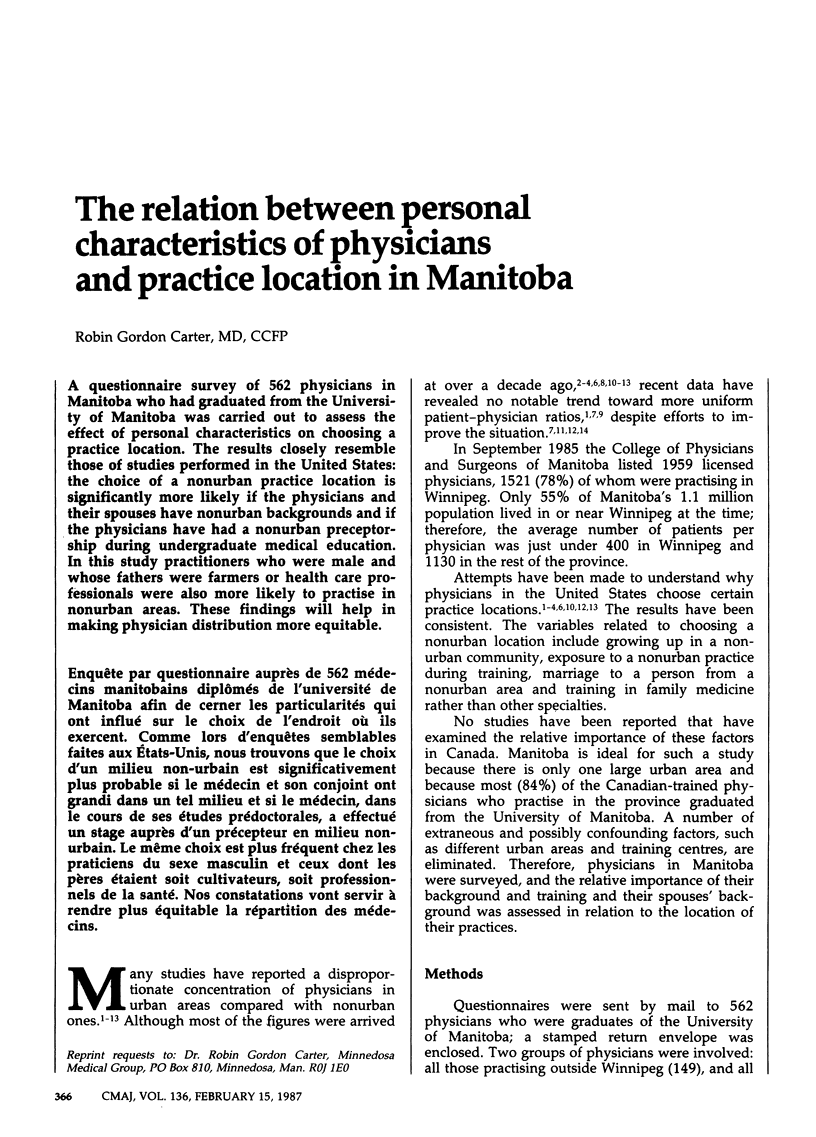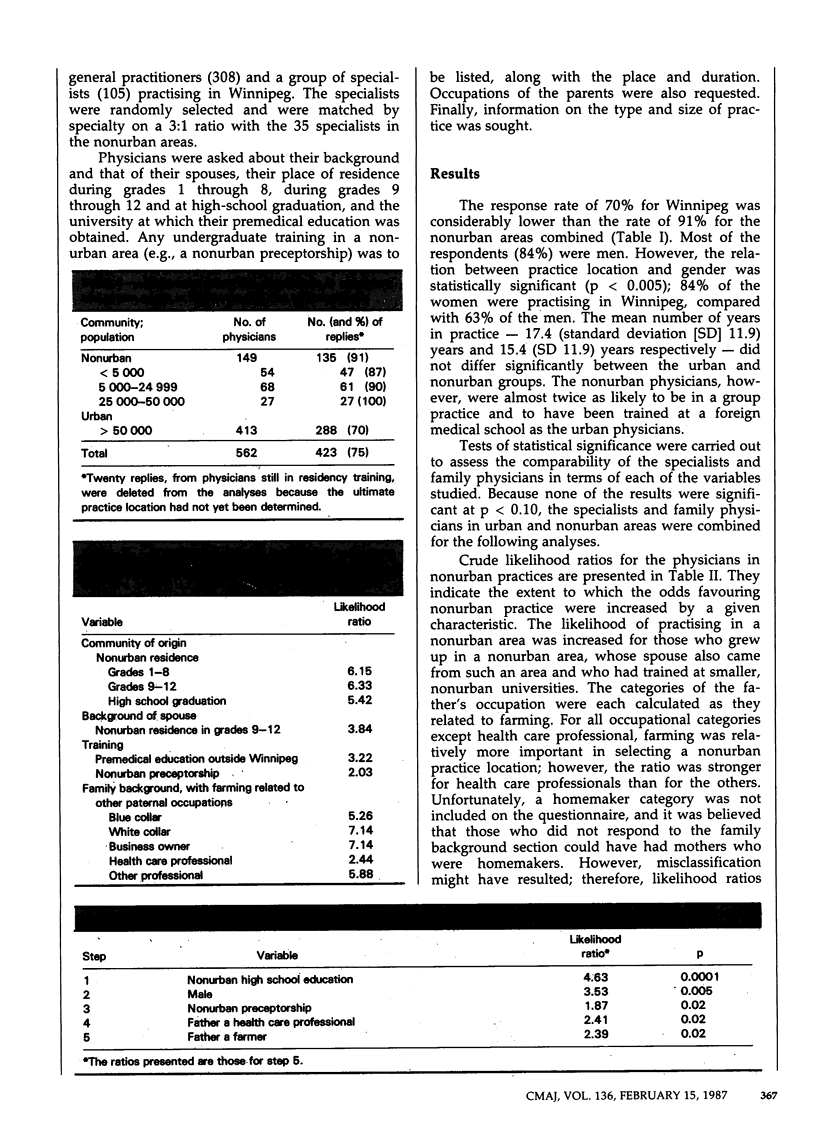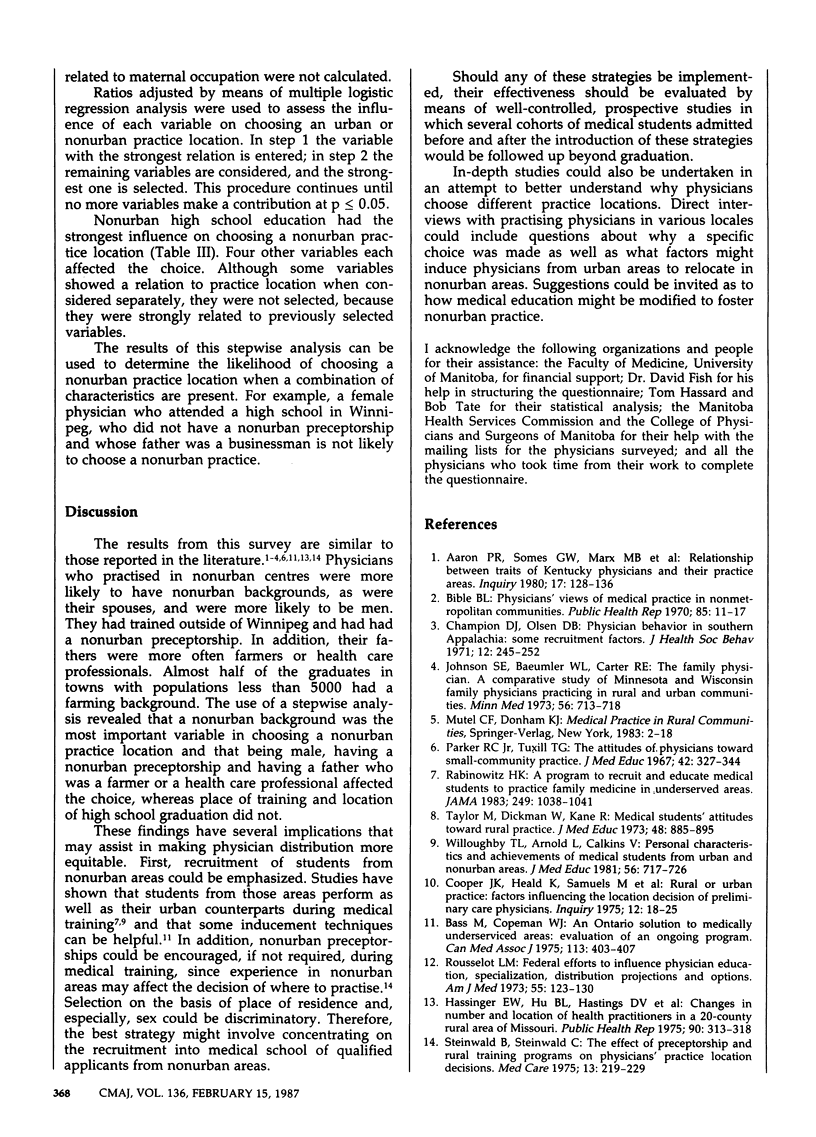Abstract
A questionnaire survey of 562 physicians in Manitoba who had graduated from the University of Manitoba was carried out to assess the effect of personal characteristics on choosing a practice location. The results closely resemble those of studies performed in the United States: the choice of a nonurban practice location is significantly more likely if the physicians and their spouses have nonurban backgrounds and if the physicians have had a nonurban preceptorship during undergraduate medical education. In this study practitioners who were male and whose fathers were farmers or health care professionals were also more likely to practise in nonurban areas. These findings will help in making physician distribution more equitable.
Full text
PDF


Selected References
These references are in PubMed. This may not be the complete list of references from this article.
- Aaron P. R., Somes G. W., Marx M. B., Cooper J. K. Relationship between traits of Kentucky physicians and their practice areas. Inquiry. 1980 Summer;17(2):128–136. [PubMed] [Google Scholar]
- Bass M., Copeman W. J. An Ontario solution to medically underserviced areas: evaluation of an ongoing program. Can Med Assoc J. 1975 Sep 6;113(5):403–407. [PMC free article] [PubMed] [Google Scholar]
- Bible B. L. Physicians' views of medical practice in nonmetropolitan communities. Public Health Rep. 1970 Jan;85(1):11–17. [PMC free article] [PubMed] [Google Scholar]
- Champion D. J., Olsen D. B. Physician behavior in Southern Appalachia: some recruitment factors. J Health Soc Behav. 1971 Sep;12(3):245–252. [PubMed] [Google Scholar]
- Cooper J. K., Heald K., Samuels M., Coleman S. Rural or urban practice: factors influencing the location decision of primary care physicians. Inquiry. 1975 Mar;12(1):18–25. [PubMed] [Google Scholar]
- Hassinger E. W., Hu B. L., Hastings D. V., McNamara R. L. Changes in number and location of health practitioners in a 20-county rural area of Missouri. Public Health Rep. 1975 Jul-Aug;90(4):313–318. [PMC free article] [PubMed] [Google Scholar]
- Johnson S. E., Baeumler W. L., Carter R. E. The family physician. A comparative study of Minnesota and Wisconsin family physicians practicing in rural and urban communities. Minn Med. 1973 Aug;56(8):713–718. [PubMed] [Google Scholar]
- Parker R. C., Jr, Tuxill T. G. The attitudes of physicians toward small-community practice. J Med Educ. 1967 Apr;42(4):327–344. doi: 10.1097/00001888-196704000-00004. [DOI] [PubMed] [Google Scholar]
- Rabinowitz H. K. A program to recruit and educate medical students to practice family medicine in underserved areas. JAMA. 1983 Feb 25;249(8):1038–1041. [PubMed] [Google Scholar]
- Rousselot L. M. Federal efforts to influence physician education, specialization distribution projections and options. Am J Med. 1973 Aug;55(2):123–130. doi: 10.1016/0002-9343(73)90159-9. [DOI] [PubMed] [Google Scholar]
- Steinwald B., Steinwald C. The effect of preceptorship and rural training programs on physicians' practice location decisions. Med Care. 1975 Mar;13(3):219–229. doi: 10.1097/00005650-197503000-00004. [DOI] [PubMed] [Google Scholar]
- Taylor M., Dickman W., Kane R. Medical students' attitudes toward rural practice. J Med Educ. 1973 Oct;48(10):885–895. doi: 10.1097/00001888-197310000-00001. [DOI] [PubMed] [Google Scholar]
- Willoughby T. L., Arnold L., Calkins V. Personal characteristics and achievements of medical students from urban and nonurban areas. J Med Educ. 1981 Sep;56(9 Pt 1):717–726. doi: 10.1097/00001888-198109000-00003. [DOI] [PubMed] [Google Scholar]


